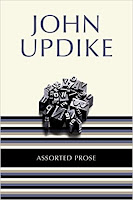The publisher, Muza, used the same cover design template now so well known to Polish readers since the first Muza Murakami, A Wild Sheep Chase, in 2003 (the very first Murakami in Polish was published in 1994 by another publisher). That original design and the first few covers were done by the talented Agnieszka Spyrka. After her untimely death, the new designers have been asked to keep the same general form, with Murakami's name written vertically against a backdrop of bold colors.
The English-language version of First Person Singular, in Philip Gabriel's translation, is scheduled to come out on April 6, 2021 from Knopf/Random House and Harvill Secker. The book can already be pre-ordered on Amazon. This is the description from the Amazon page.
"The eight stories in this new book are all told in the first person by a classic Murakami narrator. From memories of youth, meditations on music, and an ardent love of baseball, to dreamlike scenarios and invented jazz albums, together these stories challenge the boundaries between our minds and the exterior world. Occasionally, a narrator may or may not be Murakami himself. Is it memoir or fiction? The reader decides. Philosophical and mysterious, the stories in First Person Singular all touch beautifully on love and solitude, childhood and memory. . . all with a signature Murakami twist."
The Penguin Random House page, on the other hand, says:
"A riveting new collection of short stories from the beloved, internationally acclaimed Haruki Murakami.The eight masterful stories in this new collection are all told in the first person by a classic Murakami narrator, a lonely man. Some of them (like "With the Beatles," "Cream" and "On a Stone Pillow") are nostalgic looks back at youth. Others are set in adulthood--"Charlie Parker Plays Bossa Nova," "Carnaval," "Confessions of a Shinagawa Monkey" and the title story, "First Person Singular." Occasionally, a narrator who may or may not be Haruki himself is present, as in "The Yakult Swallows Poetry Collection." Is it memoir or fiction? The reader decides. The stories touch beautifully on love and loss, childhood and death . . . all with a signature Murakami twist."
While both end on the same note ("Is it memoir or fiction? The reader decides"), the two descriptions are in fact quite different. Amazon seems to appeal to readers' expectations about Murakami's style, referring to "boundaries between our minds and the exterior world," "dreamlike scenarios," and the "classic Murakami narrator," while Penguin Random House seems to hope it can sell the book simply by using generic adjectives like "masterful," "beloved," and "internationally acclaimed."
The US (Knopf) and the British (Harvill Secker) covers were introduced on Facebook on the same day, October 14 of this year. Both feature a monkey, no doubt referring to the story, "Confessions of a Shinagawa Monkey," but as usual, the difference in style between the two covers is striking.
I also wanted to announce the publication of the Turkish translation of Pinball, 1973 by Ali Volkan Erdemir. The publisher, as with other translations by Volkan, is Doǧan Kitap. Though the title is given as Pinball, 1973 on the publisher's page, the comma seems to be missing from the cover (a very cool cover design, by the way). Perhaps Volkan can shed some light on this apparent mystery?









































